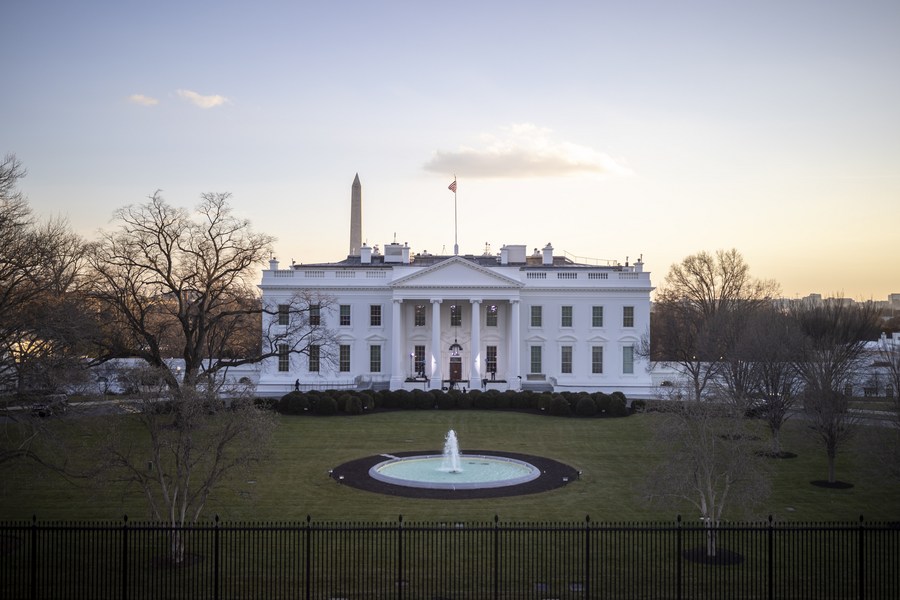
Photo taken on Jan. 20, 2021 shows the White House in Washington, D.C., the United States. (Photo by Ting Shen/Xinhua)
Washington (People’s Daily) – The United States has extended a key nuclear arms control treaty with Russia for five years, Secretary of State Antony Blinken announced Wednesday.
Blinken said in a statement that especially during times of tension, verifiable limits on Russia’s intercontinental-range nuclear weapons are vitally important. “Extending the New START Treaty makes the US, US allies and partners, and the world safer. An unconstrained nuclear competition would endanger us all,”said the new top US diplomat.
Blinken said that the US is committed to effective arms control that enhances stability, transparency and predictability while reducing the risk of costly, dangerous arms races.
Moscow also announced on Wednesday the extension of the New START nuclear arms reduction agreement with the US, praising the deal as a step in the right direction for international stability.
The Russian Foreign Ministry said in a statement that the treaty was formally signed without any amendments or additions, in effect preserving the arms control accord as it currently exists until February 5, 2026.
Last week, Russian President Vladimir Putin signed a bill extending the arms control agreement, after negotiations with US President Joe Biden resulted in a five-year extension of the accord. The treaty was at risk of expiring after the previous US administration under Donald Trump had refused to prolong it without preconditions that were deemed unacceptable to Moscow.
Implemented in 2011, the New Strategic Arms Reduction Treaty (known as New START) limits the number of nuclear warheads, and their delivery vehicles, that the US and Russia are allowed to possess. The agreement is considered the only remaining arms control agreement between the two nuclear powers.
The New START Treaty limits both US and Russia to deploying 1,550 nuclear warheads over 700 delivery systems, including intercontinental ballistic missiles, submarine-launched ballistic missiles, and bombers. It also allows for 18 on-site inspections every year that allow each side to keep a close eye on the others' capabilities.


